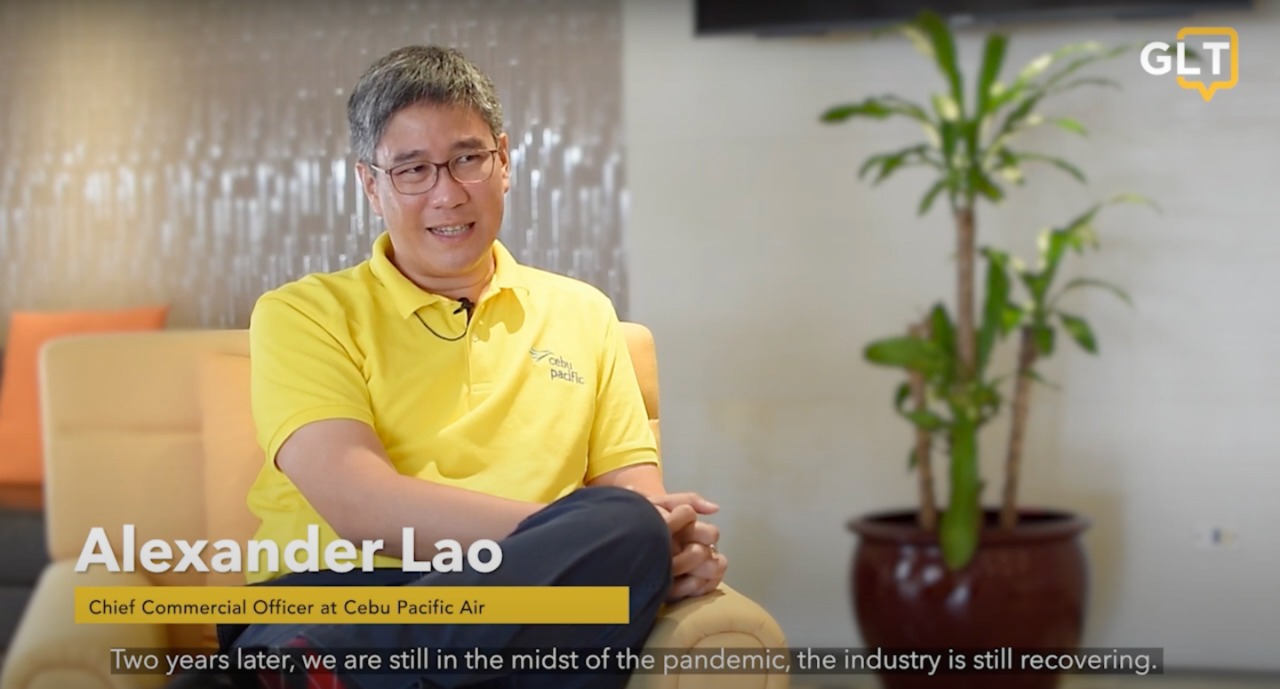Roughly 64,000 passenger seats of Cebu Pacific, the Philippines’ largest national flag carrier, are getting filled on a daily basis, outpacing the pre-pandemic level.
This was a far cry from the bleak year of 2020, described as the largest crisis ever in aviation history.
The fast-spreading COVID-19 had brought airlines to their knees, leaving passenger aircraft grounded for months.
Cebu Pacific, which has long been a part of the country’s DNA that’s just too important to fail, was not immune to the impact of the pandemic. But it worked tirelessly to put up a fierce fight and hold on.
The painful times
Xander Lao, CEB Chief Commercial Officer, discussed on the pilot episode of “Global Leaders Talk with Dr. Karen Remo” how the airline weathered and triumphed over the daunting economic consequences of the global health crisis.
When asked by Dr. Remo, CEO and Managing Director of New Perspective Media, about how the company held on during the turbulent period, Lao said: “A lot of things happened in the pandemic that’s been quite challenging.”
“Obviously, when the President [former president Rodrigo Duterte] had announced the lockdown back in March of 2020. I think at that time, we had thought this is going to last a couple of months or three months at most.”
The top CEB official also revealed one of the toughest decisions of the company—to axe 1 in every 3 members of their workforce, from pilots to cabin crew and ground-handling staff.
The silver lining
With sharp drop in revenues from passenger traffic during the pandemic, Cebu Pacific had to recalibrate and devise strategies to survive.
Lao revealed that one of the factors that cleared the way for Cebu Pacific’s recovery was the use of air cargo as an alternative asset for source of revenue.
The airline transported essential goods and life-saving vaccines across its widest domestic network. Its hybrid flights with separate sectors carrying passengers and cargo were also introduced.
The move provided a silver lining to Cebu Pacific during a gloomy period for the entire industry.
Among the record period for CEB cargo was during the first semester of 2021—also known as the vaccine year. The cargo sales contributed 48 percent or P2.815 billion to Cebu Pacific’s total revenues.
Transformational program
The online series “Global Leaders Talk with Dr. Karen Remo” also touched upon the changes that the pandemic has brought to the airline company.
Lao shared: “One of the things we undertook was our transformational program within Cebu Pacific.”
A significant part of this transformational program was the recapitalization exercise, which enabled the company to inject additional funding acquired from crucial loan facilities.
The airline also bolstered its digital direct marketing backed by its own state-of-the-art Customer Command Center, which ensures a speedy response to customers’ queries on social media.
Meanwhile, Cebu Pacific effectively faced soaring fuel prices at record levels in recent months thanks to its first mover advantage. Years before the pandemic, it had started investing in efficient aircrafts such as the Airbus NEOs.
Clear skies
Today, Cebu Pacific sees clear skies again past the zero visibility period of the pandemic.
With an average of 340 flights to 34 domestic and 18 international routes a day, the airline’s system-wide capacity is back at 88 percent.
Domestically, the seat capacity has reached 109 percent compared to December 2019.
More of its fleet for international flights are getting off the ground again as the global travel and tourism industry moves its way to recovery.
Watch the pilot episode of “Global Leaders Talk with Dr. Karen Remo” below:




